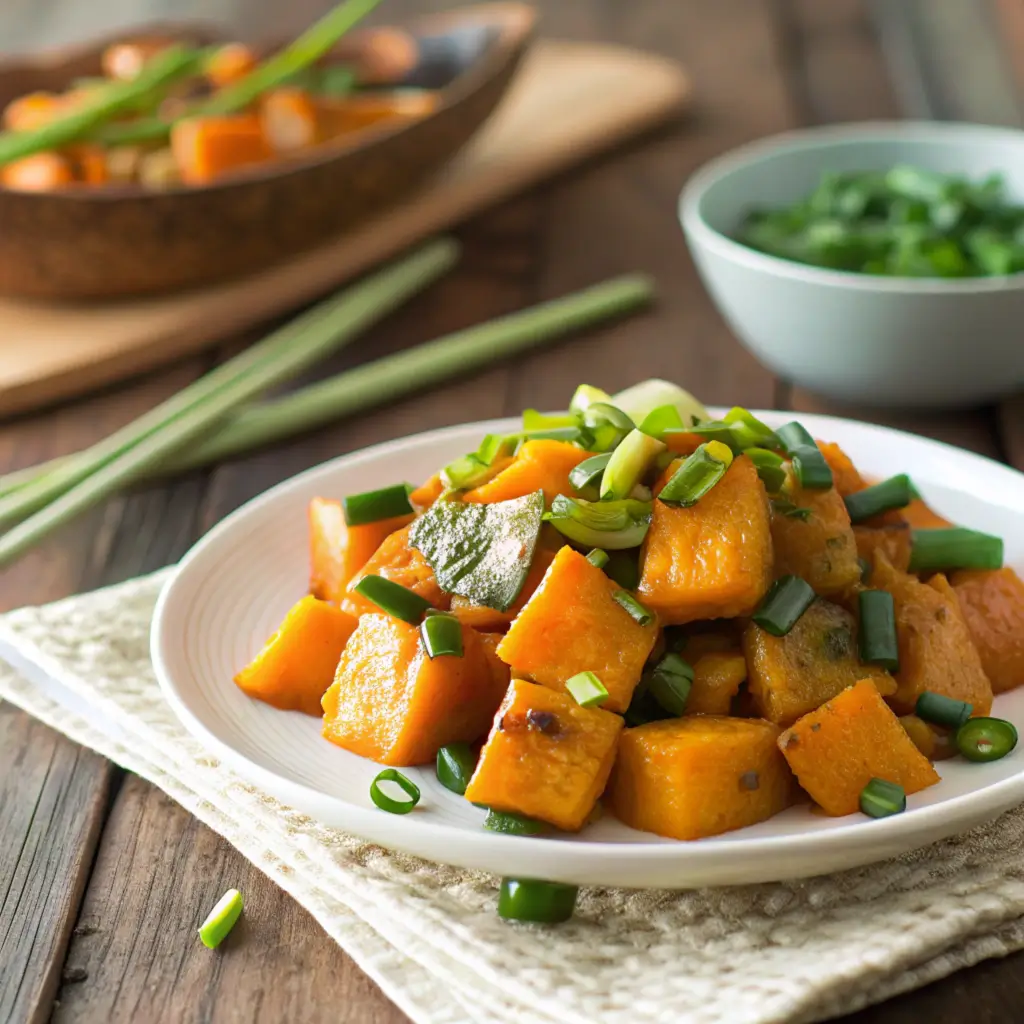Kabocha squash, well-known for its sweet and sweet, nutty taste and silky texture, is an essential ingredient for many Asian food preparations. When it is paired with the strong and delicious elements of chinese squash recipes kabocha vegan and transforms into dishes which are delightful but are also suitable for those who eat vegan. This comprehensive guide we’ll show you how to maximize the benefits of this squash’s versatility with specific recipes, helpful tips, and step-by-step instructions. If you’re an experienced chef or are new to the concept of veganism the recipes listed here will enhance the quality of your food and help you to improve your cooking.
Table of Contents
What Makes Kabocha Squash Special in Chinese Cuisine?
Chinese squash recipes kabocha vegan, also known as Japanese pumpkin, offers distinct sweetness, which complements the umami flavor that is typically found in Chinese recipes. The firm texture of the squash holds it up to a variety of ways of cooking like steaming, stir-frying or roasting. Additionally, kabocha is high in beta-carotene, fiber and vital vitamins, making it a great alternative for people who want to eat healthy.
Chinese squash recipes kabocha vegan, It’s a vegan food, kabocha is appreciated for its flexibility. It is a great match for soy-based sauces such as ginger, garlic, and sesame oil, that enhance the natural flavor. In addition, its vivid citrus flesh and green skin provide striking visual appeal which makes it a popular choice for the home cook and experienced chefs.
Ingredients and Instructions
Making chinese squash recipes kabocha vegan a staple in your kitchen is easy and enjoyable. This recipe demonstrates how to cook a traditional stir-fried Chinese kabocha recipe.
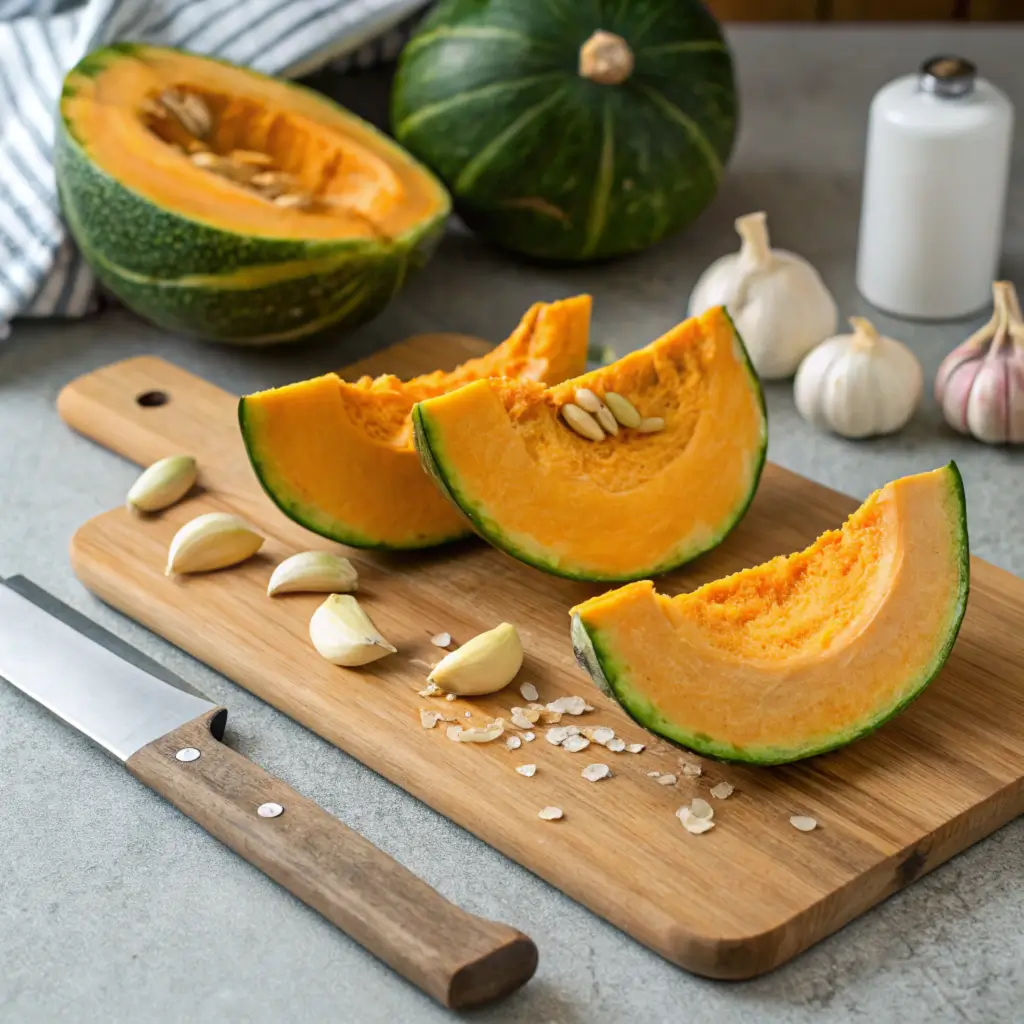
Ingredients
| Ingredient | Amount | Notes |
|---|---|---|
| Kabocha squash | 1 medium | Washed, deseeded, skin-on |
| Soy sauce | 2 tbsp | Use tamari for gluten-free |
| Sesame oil | 1 tbsp | Adds authentic flavor |
| Garlic | 2 cloves | Finely minced |
| Ginger | 1 tsp | Fresh, grated |
| Chili flakes | 1 tsp | Optional, for heat |
| Green onions | 2 stalks | Finely chopped |
Step-by-Step Instructions
- Prepare the squash: Slice the chinese squash recipes kabocha vegan squash into bite-sized, even pieces. The skin should be left on to add an extra texture and nutritional value, because the skin gets tender after being it is cooked.
- The Pan: Warm sesame oil in a large pan or wok with a medium-low temperature. As soon as the oil starts to glow then add the diced garlic and grated ginger. Stir it for around 30 seconds or so until fragrant.
- Include the squash: Put the pieces of squash in the pan, and then toss the pieces to evenly coat them with oil and aromas.
- Season Pour soy sauce on the squash and sprinkle on chili flakes to add some heat. Combine well.
- Cooking: Reduce the heat to a low level and cover the pan and allow the squash to simmer. You can add an additional splash of water, if required to keep the squash from sticking. Bake for 10 to 15 minutes or until the squash is tender enough to fork.
- Garnish Disconnect the saucepan from the heat and sprinkle green onions chopped on the top and serve right away.
Elevate Your Kabocha Squash Recipes
Recipe Variations to Try
- Sweet and Savoury: Include a teaspoon of maple syrup into the soy sauce, creating A caramelized glaze which enhances the natural sweetness of squash. This dish is delicious with jasmine rice.
- Spicy Stir-Fry Increase the amount of chili flakes or use fresh red chilies to give it additional spice. It is also possible to include bell peppers to add color and crunch.
- Changes in soup: Blend cooked chinese squash recipes kabocha vegan, coconut milk, vegetable broth and some turmeric to create a smooth golden soup ideal for chilly days.
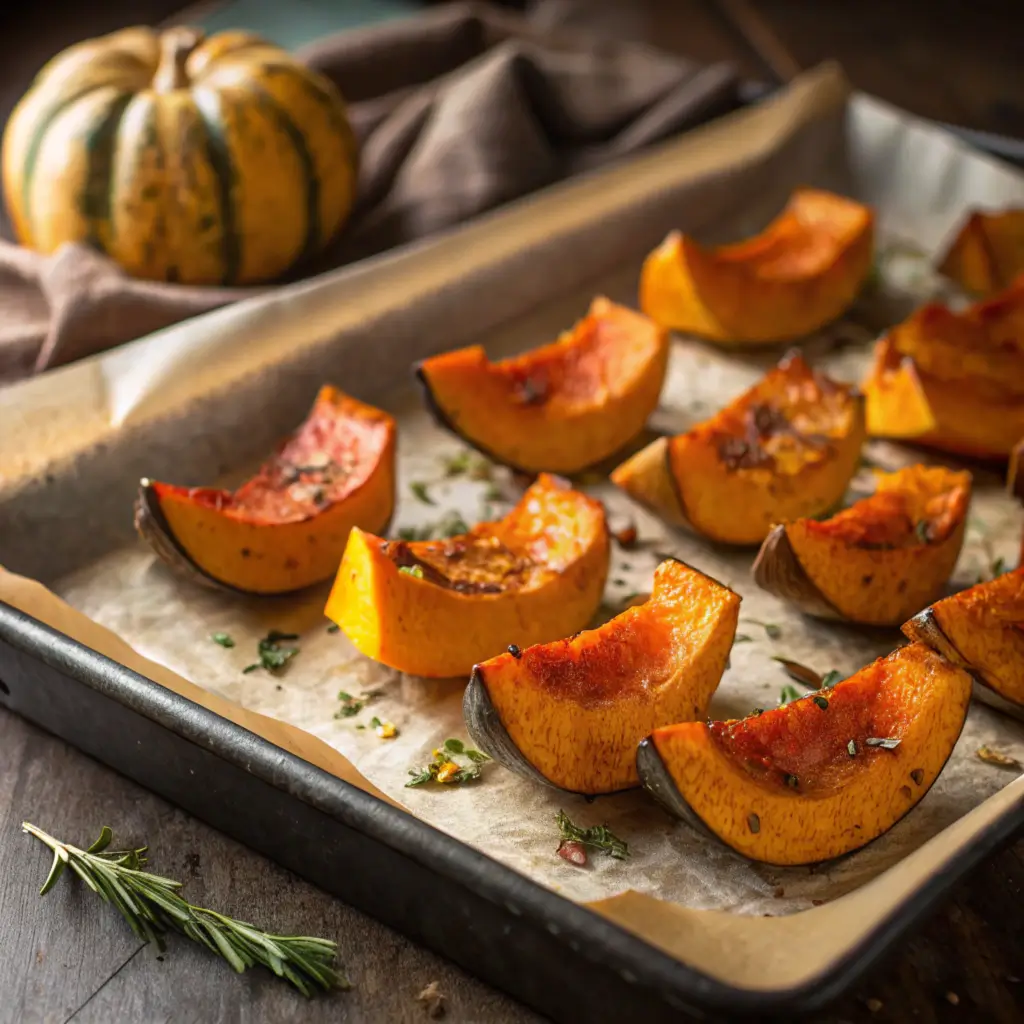
Expert Tips for Perfect Results
- Picking the best squash: Look for a solid kabocha squash that has a soft, dark green skin and without imperfections. The flesh should be orange to indicate that it is ripe.
- Making it a Success To facilitate slicing you can microwave the squash for a couple of minutes, allowing it to soften the skin.
- Pairing Tips: Serve this stir-fried Kabocha dish with steamed the bok choy, or with Chinese-style vegan dumplings. Learn more about vegan dumpling recipes here.
Troubleshooting Common Mistakes
Even the most experienced cooks will face problems with the Kabocha squash. This is how you can avoid some of the most common mistakes:
- Overcooking Kabocha squash cooks fast and may turn mushy when not cooked properly. Try to get a soft but firm and firm taste and texture.
- Uneven Slices: Uniform slices ensure even cooking. Utilize the sharpest knife and an even hand to get uniformity.
- Not Taking Aromatics into Account: Garlic, ginger and sesame oil is vital to create authentic Chinese tastes. The absence of these ingredients could result in bland food.
Additional Ideas for Using Kabocha Squash
- In Dumplings Mash cooked Kabocha squash and serve it as an ingredient for fillings in dumplings made of vegan ingredients. The creamy texture of the squash is delicious with ginger and the scallions.
- Roasted Delight Kabocha wedges are roasted along with olive oil, salt and pepper to make a delicious appetizer. If you want to add the perfect Chinese variation, drizzle the dish the dish with hoisin sauce just before serving.
- Salads and Bowls: Include roasted or steam the kabocha squash in salad bowls and grain bowls to add the perfect pop of hue and naturally sweet.
If you want more ideas for vegans look into high-protein breakfast options which are perfect with chinese squash recipes kabocha vegan. Check out This High Protein vegan breakfast for a great start to your day. healthy and nutritious plant-based breakfasts.
Mastering Kabocha Squash: Beyond the Basics
Steaming: The Healthiest Way to Prepare Kabocha
Steaming is among the easiest and most healthy methods to cook the chinese squash recipes kabocha vegan and preserve the taste and nutritional value. It requires only a few ingredients and provides a smooth and melt-in-your mouth texture. It pairs well with spicy sauces and delicate salad dressings.
How to Steam Kabocha Squash:
- Slice the kabocha squash in pieces, but leave the skin intact for flavor and nutrients.
- Set the wedges inside steamer baskets and place them over hot water.
- Then cover and steam for 12 to 15 hours or till the meat becomes firm but not soft.
Pro TIP: Serve steamed kabocha along with a drizzle of soy sauce and sprinkles of sesame seeds to create a fast healthy and delicious appetizer. You can also mix it up with the light dressing of ginger and scallion for a fresh variation.
Widening your Horizons Mixing Kabocha with other ingredients
Classic Flavor Combinations
Kabocha’s sweetness can make it an incredibly versatile ingredient, which is well-suited to contrast and complementing flavor profiles:
- Soy Sauce and Vinegar: These ingredients add the umami flavor to offset the sweetness of squash.
- Ginger and Garlic Improve the earthy notes with these fragrant aromas.
- Spiced Additions Chili oil and Sichuan peppercorns provide spice and depth, perfect for people with adventurous palates.
Real-life Example: For a quick and simple meal, you can stir fry steaming chinese squash recipes kabocha vegan steamed with tofu cubes as well as garlic and some chili oil. The dish is filling nutritious, healthful, and loaded with flavour.
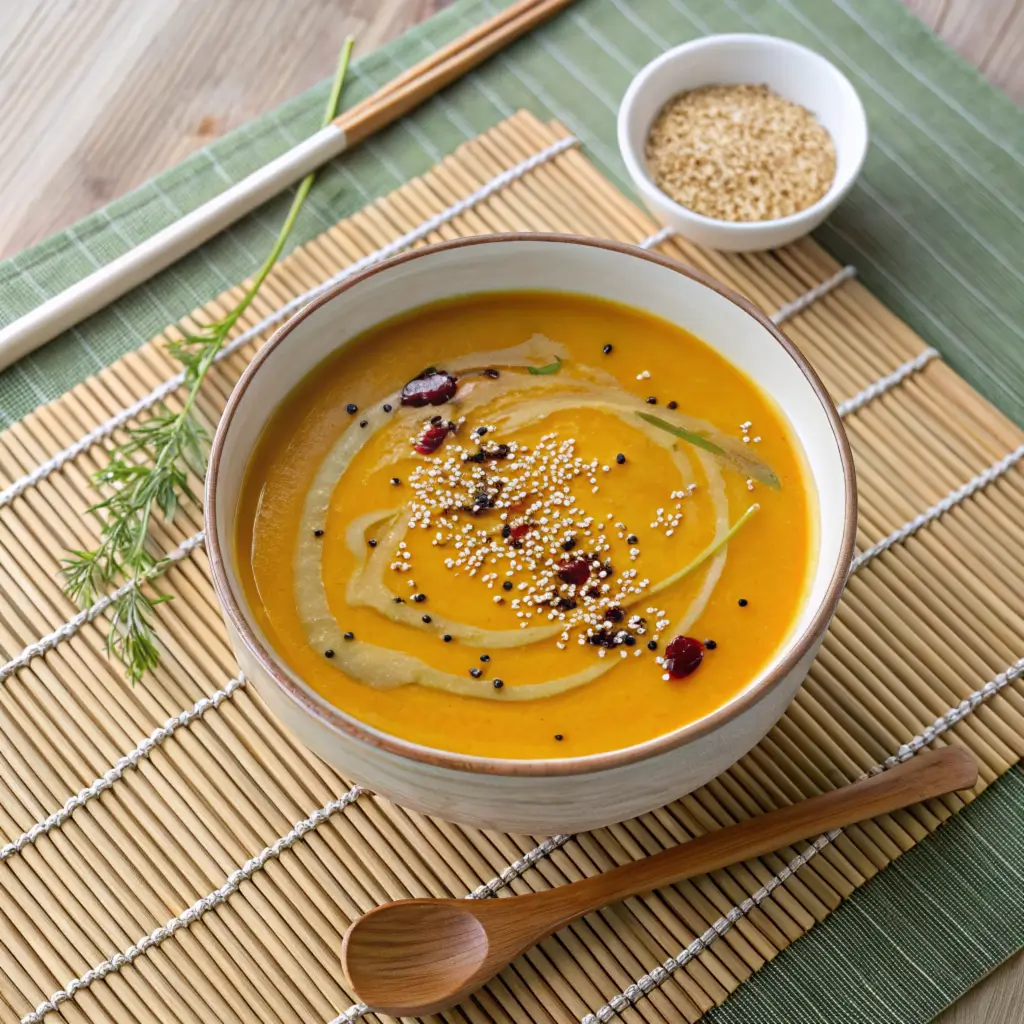
Improved Nutrition by High-Protein Combinations
Kabocha is a natural source of protein. Therefore, mixing it with proteins-rich foods makes for a healthy and balanced dish. You can add chickpeas and tempeh or even edamame into your Kabocha dishes to give them an energy boost. Find out more about the protein found in plant-based sources High Protein Good Macros Desserts .
Creative Recipes and Serving Suggestions
Kabocha Soup: A Warm, Comforting Dish
The chinese squash recipes kabocha vegan pumpkin can be transformed into the most delicious, silky soup ideal for chilly evenings. Mixing cooked squash and coconut milk gives it a smooth texture. Meanwhile, spices such as cumin, turmeric and cumin give it a rich flavor and warmth.
Simple Kabocha Soup Recipe:
- Roast kabocha squash until caramelized.
- Saute garlic, onions, and ginger together in a saucepan until the spices are smoky.
- Incorporate roasted kabocha with vegetable broth and coconut milk. Simmer for 10 minutes.
- Blend until it is smooth and smooth. Add the addition of salt and pepper.
Pro Tips: Garnish with toasted pumpkin seeds and the addition of a splash of chili oil to give it added taste and crunch.
Vegan Dumplings With Kabocha Filling
Mash chinese squash recipes kabocha vegan to make an ingredient in dumplings made of vegan ingredients. Its smooth texture goes perfectly with finely chopped scallions and the hint of sesame oil. Serve along with a dip sauce that is consisting of soy sauce rice vinegar and the addition of chili oil.
FAQs: All Your Questions Answered
What’s kabocha squash? Chinese?
Chinese squash recipes kabocha vegan is known as “Nan Gua ” (nan gua) in Chinese meaning pumpkin. It’s a favorite ingredient in lots of Chinese homes due to its sweet taste and flexibility.
Do you like eating the flesh of kabocha squash?
The skin of the squash is edible. It becomes soft during cooking and gives a nice taste to the food.
Does kabocha have more health benefits then pumpkin?
Chinese squash recipes kabocha vegan has more beta-carotene and the dietary fiber that is present in pumpkin, which makes it a less nutrient-rich alternative.
Do you peel kabocha squash before cooking?
It’s not necessary to remove the skin of kabocha squash. Skin is thin and edible and becomes soft while cooking.
What is the best way to conserve cooked kabocha squash?
Keep the chinese squash recipes kabocha vegan that you have cooked in an airtight container within the refrigerator for up three days. If you want to store it for longer periods, put it into individual portions to freeze.
Can I freeze kabocha squash?
Kabocha squash is a good choice to be preserved and frozen. It is first cooked, and after which you can store it in an airtight bag or in a freezer bag for as long as 3 months.
How do I best to slice kabocha squash?
To cut safely chinese squash recipes kabocha vegan in a safe manner, microwave it for just a few minutes in order to soften the skin. Make use of a sharp knife to cut it into pieces manageable after which you can scoop the seeds.
Which are the top dishes that you can serve alongside the squash kabocha?
Kabocha squash can be served with steaming noodles, rice, or simply a salad of greens. Kabocha squash is also a great complement to spicy foods or sauces with citrus flavors beautifully.
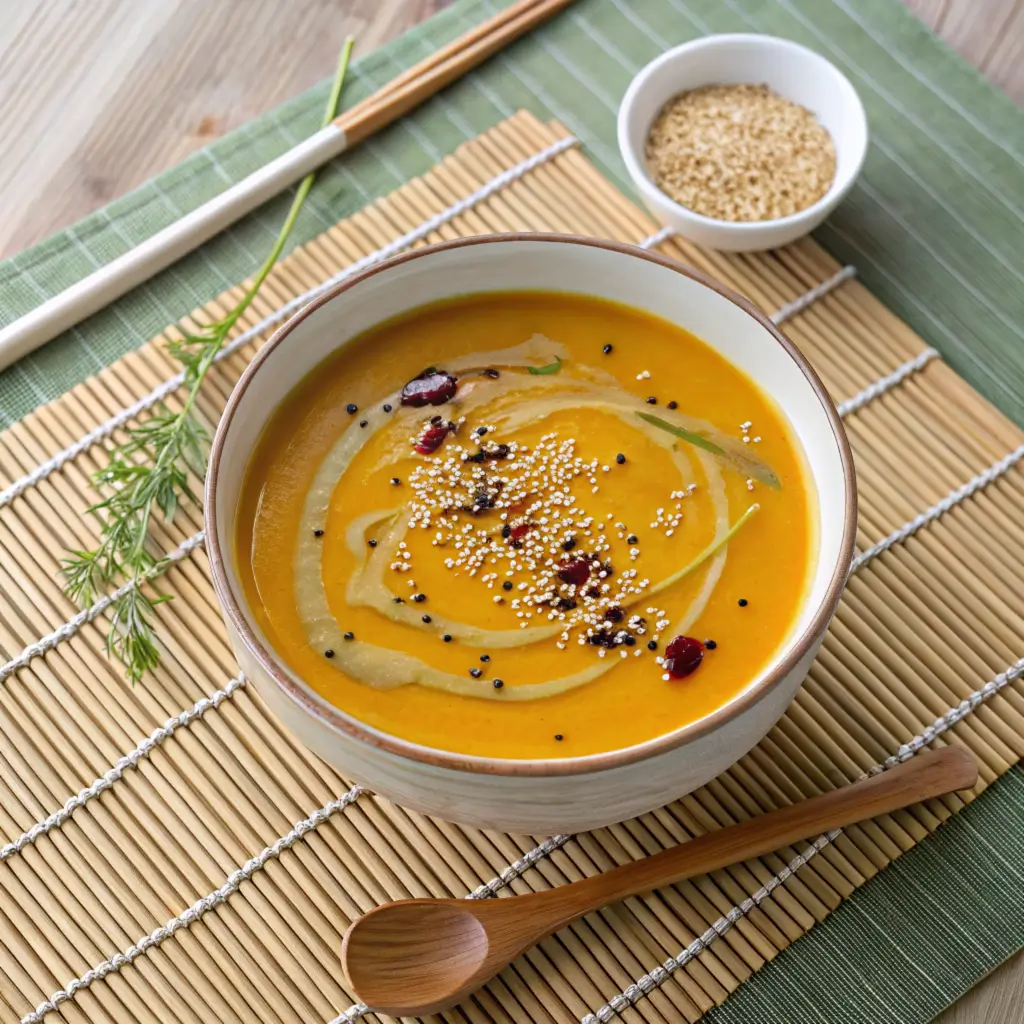
Conclusion
Kabocha squash is an incredibly multi-faceted ingredient that shines in Chinese vegan dishes. From delicious soups and comforting dishes to tasty stir-fries, it adds the perfect texture, sweetness and lots of nutrition to every meal. When you experiment with the techniques and the recipes listed here it is possible to create meals that aren’t just delicious but also extremely satisfying. If you’re roasting, steaming or blending it into soups chinese squash recipes kabocha vegan is a necessity for any plant-based culinary repertoire.
